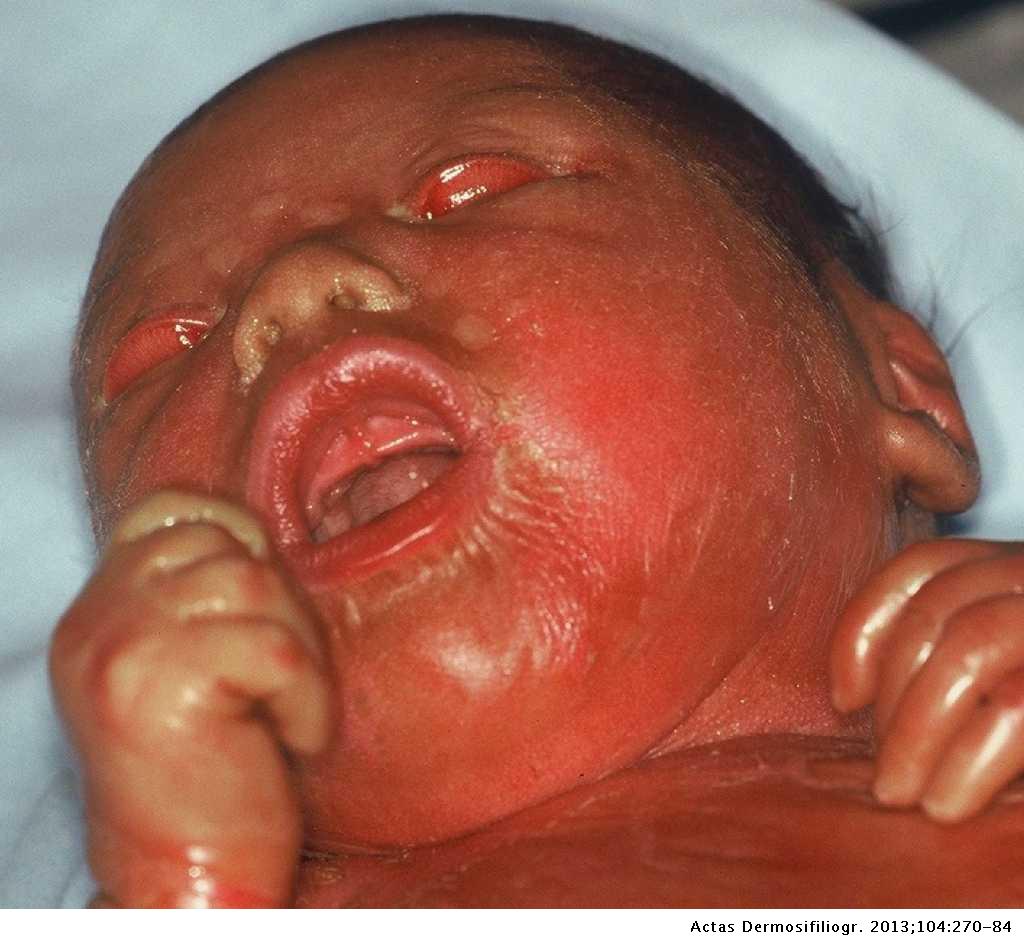
When the baby was referred to us for management of ectropion it was hemodynamically stable and there was no evidence. The primary treatment consists of moisturizing the skin reducing fluid loss and preventing infections.

Management of neonates with collodion usually requires a multidisciplinary approach that includes the parents supporting staff neonatologists dermatologists and in some cases ophthalmologist and otorhinolaryngologist.
Collodion baby treatment in india. Ectropion in A Case of Collodion Baby. Nikhil Panse and Parag Sahasrabudhe. Department of Plastic Surgery BJ Medical College and Sasoon Hospital Pune India.
Nikhil Panse MD Vimal Niwas Sudarshan Society Near Model Colony Post Office Shivajinagar Pune 16. Treatment is preferably administered as on and off therapy helping the clearance of the drug in the interim period. In the background of our case we recommend early use of retinoids in collodion babies as it is a good armamentarium which can bring a dramatic change in the life of these babies.
In this report we describe two babies with collodion membrane successfully treated with oral acitretin and other supportive measures. Our first case a 17-d-old 34 wk 26 kg male baby was admitted with a diagnosis of collodion baby with severe ectropion Fig. He was nursed in an incubator with a relative humidity of 75 gradually.
Collodion baby is a rare disease. And there is no established management protocol. We managed the patient conservatively by the use of 005 Clobetasol ointment for local.
According to experts collodion babies should be placed in a high humidity chamber and monitored closely for complications. A high humidity environment will allow slow gradual sloughing off. Collodion baby is a rare congenital disorder with incidence of 1 in 300000 live births.
2 The condition is usually a manifestation of congenital ichthyosiform erythroderma or lamellar icthyosis. The term collodion baby is used to describe a newborn covered with a translucent parchment-like skin sheet. It is an extremely rare condition with an estimated incidence of 1 in 300000 live births.
Clinically the baby will present with a collodion membrane with fissures ectropium eclabium and hypoplastic digits. What is the management of a collodion baby. The baby is usually transferred to a neonatal intensive care unit NICU.
An incubator provides a humidified neutral temperature environment. Other supportive treatments such as intravenous fluid and tube feeding are often necessary. The aim is to keep the skin soft and attempt to reduce scaling.
The collodion membrane should not be debrided pulled off. Nursing usually takes place in a neonatal intensive care unit and good intensive care seems to have improved the prognosis markedly. The collodion membrane should peel off or shed 2 to 4 weeks after birth revealing the underlying skin disorder.
Collodion babies should be placed in a high humidity chamber and monitored closely for complications. A high humidity environment will allow slow gradual sloughing off of the membrane. The membrane will come off on its own and should not be peeled off.
Infants are covered with a collodion membrane at birth. After birth the skin is dry and similar to parchment. The primary treatment consists of moisturizing the skin reducing fluid loss and preventing infections.
Recently cases have been reported in which patients have successfully been treated with acitretin an oral retinoid. Describing that healing is a slow process in such cases Dr Rathod added We have been applying paraffin to make the babys skin tender and sun cream so the dry skin is slowly replaced with. Management of neonates with collodion usually requires a multidisciplinary approach that includes the parents supporting staff neonatologists dermatologists and in some cases ophthalmologist and otorhinolaryngologist.
The primary aim of treatment in CB is to eliminate scaling and to reduce xerosis without causing excessive irritation. Treatment initially consists of high fluid intake to avoid dehydration and transepidermal fluid loss and use of heated humidified incubator and emulsifying ointment and retinoids. Anoop Verma Naresh Uttamani Consulting Pediatricians.
Swapnil Nursing Home and Research. Two newborn infants with ichthyosis one with lamellar ichthyosis and one with nonbullous ichthyosis form erythroderma who presented at birth with a collodion baby appearance were treated with acitretin 1 mgkgday. Clinical improvement was achieved shortly after treatment.
Management of neonates with collodion usually requires a multidisciplinary approach that includes the parents supporting staff neonatologists dermatologists and in some cases ophthalmologist and otorhinolaryngologist. The primary aim of treatment in CB is to eliminate scaling and to reduce xerosis without causing excessive irritation. Baby did not need active resuscitation and was shifted to neonatal intensive care unit.
Dermatological opinion was taken and a diagnosis of Harlequin ichthyosis was made. Baby was managed with intravenous fluids intravenous antibiotics and topical emollients. Baby remained haemodynamically stable with cracks in the skin increasing TableFig-2.
Baby was taken to home. Collodion baby represents difficult treatment challenge because of prematurity dehydration temperature instability and infection. When the baby was referred to us for management of ectropion it was hemodynamically stable and there was no evidence.
The authors report a case of collodion baby with rare complication of acral contracture ischemia and nail dystrophy. Topical treatment with tazarotene 01 gel resulted in rapid improvement. The patient developed normal nail plates and full motor function in both hands and feet following treatment.